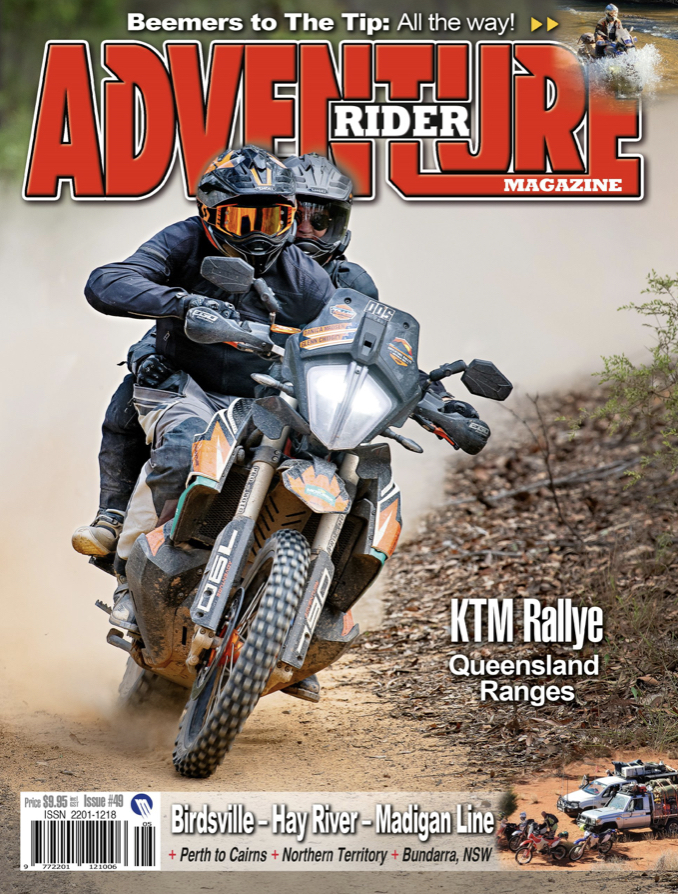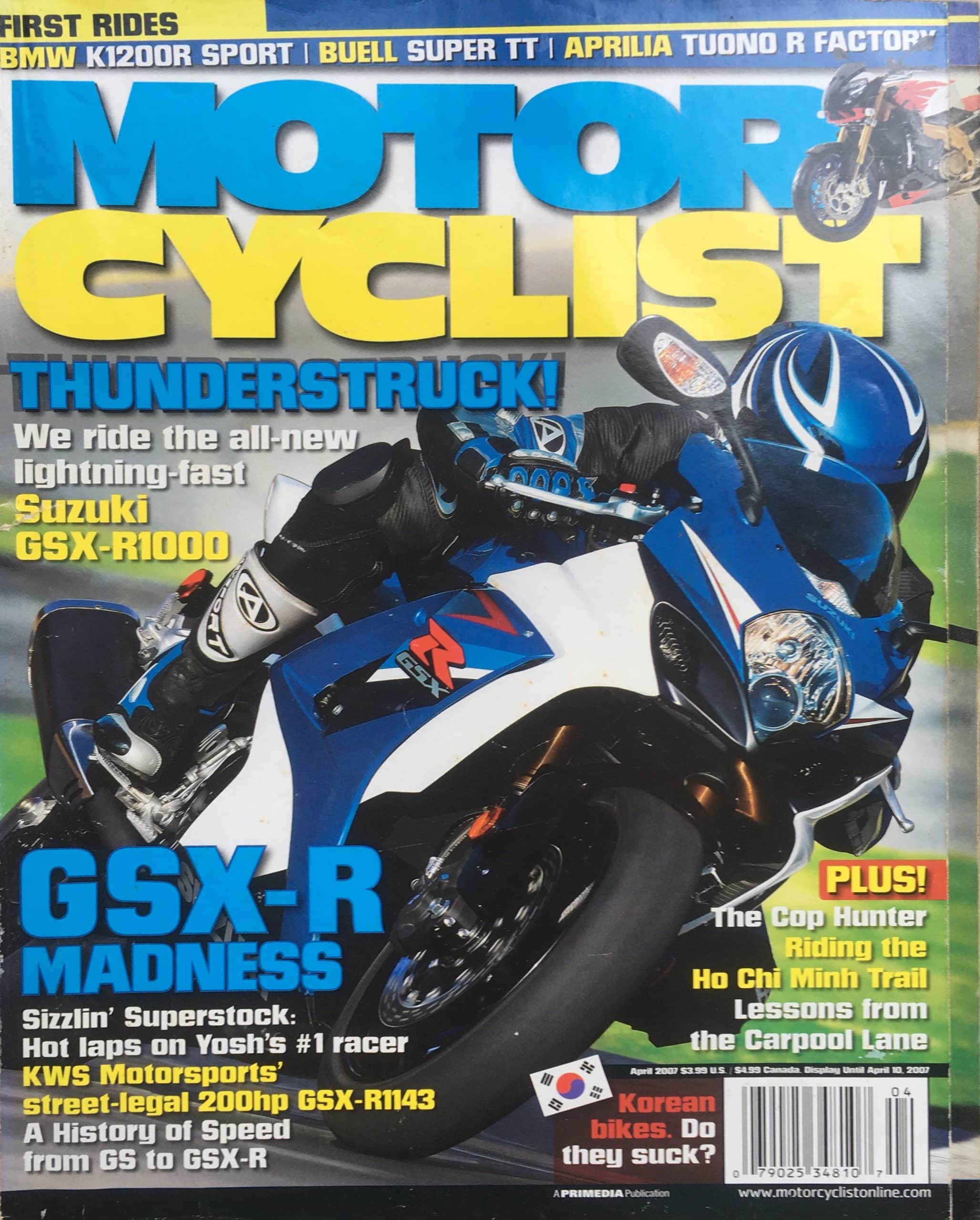TIME Magazine Asia
The 'Old Buffalo' Charges On
by Kay Johnson
The 'Old Buffalo' Charges On
The clutch handle snapped clean off in the fall, but that was not the most pressing disaster. My hulking Minsk dirt bike was lying on the only road up the mountain—and so was its less-than-hulking rider. Fumbling to find second gear, I had stalled the bike, wobbled and fallen over. Now I had to get myself and the bike off the road, fast. An adrenaline-driven heave on my part and the help of a passerby pulled us out of immediate danger, but that still left the problem of the clutch handle. It was the second day of my weeklong motorcycle tour, and the broken part threatened to scuttle the whole trip. Or so I thought. My friend Julian, who rode back to find me, barely batted an eyelid. Within an hour, he had driven to the nearest town and returned with a new handle, which he installed in 10 minutes flat. “It wouldn’t be a Minsk trip,” he shrugged, “if you didn’t have repairs.”
Vietnam’s highlands are renowned for their spectacular scenery, waterfalls and rich hill-tribe culture. But there’s another ubiquitous sight along the north’s twisting mountain roads: the smoke-belching, gear-grinding, Eastern bloc motorcycle throwback that Vietnamese call con trau gia (the old buffalo). First imported from the Soviet Union in the 1960s, the Minsk’s two-stroke engine and body have hardly changed over the years. Northern Vietnam has undeniably become Minsk country, and the old buffalo are used for everything, from personal transportation to hauling pigs, cows and chickens to hill-tribe markets.
The Minsk Club
More recently, the Minsk has attracted a cult following among expatriates in Hanoi, who are discovering what the Vietnamese have known for decades: the hardy dirt bike is ideal for touring mountain roads, gravel roads and places where there are no roads at all. In other words, perfect for the little-explored villages, wildly varied landscapes and historic sites of the north.
Vietnamese are mystified by the large number of foreigners riding around the capital on the ungainly, smoke-billowing “peasant bike,” which offers an unwelcome reminder of Soviet domination. But the foreign devotees don’t care. “I may never get a Vietnamese girlfriend riding this bike,” says Minsk enthusiast Digby Greenhalgh. “But I can get up any mountain.” Armed with a Minsk, a tool kit and a good map, few places are out of reach for the adventurous weekend warrior; those with a week can take in an astonishing array of landscapes and locations of historic and cultural interest. The “Grand Loop” first leads to Sapa, a mist-shrouded hill station 350 kilometers north of Hanoi, surrounded by hill-tribe villages. From Sapa, the route goes southwest to Dien Bien Phu, the battlefield of the historic Viet Minh victory that spelled the end of French colonial rule, and finally to Mai Chau, a picturesque valley of traditional White Thai tribe stilt houses and rice paddies set amid craggy limestone cliffs. Motorbiking Vietnam (now called Explore Indochina) offers tours with Vietnamese-speaking guides and mechanics. Or rent your own bike from Phuong Duc Cuong, the legendary Minsk mechanic at 40 Luong Ngoc Quyen Street in Hanoi’s old quarter.
Gaffer Tape and Tractor Parts
Less traveled is the northeastern loop, where the nascent tourist industry could take “Ho Chi Minh slept here” as its motto. Cao Bang province near the Chinese border is where the founder of independent Vietnam and his Viet Minh guerrillas hid from the French colonial army in the 1940s. The provincial government has turned the village of Pac Bo, said to be the site of the exact cave where Uncle Ho hid for four long years, into a communist-themed tourist attraction, complete with signs pointing out Karl Marx Mountain and Lenin Stream.
It might seem a shame to mar such natural splendor with the homely, polluting Minsk, but enthusiasts say the bike’s beauty is in its engine’s simplicity. Even novice tinkerers can fix a Minsk, and parts are easy to find even when in the countryside. Of course, the fact that the bike is easy to fix is a necessity, given its propensity to break down. Beyond the broken clutch handle, our trip also saw a friend’s handlebars come loose and a mysterious power problem in one bike that stumped four mechanics. But enthusiasts say it’s all part of the Minsk experience. “Expect to have some fun improvising with gaffer tape, wire, sticks, rocks and tractor parts,” reads the Hanoi-based Minsk Club’s official repair manual. On Vietnam’s winding northern tracks, the journey is often the destination—and so are the repairs.
More Articles
ADV Rider Magazine
by Sean Goldhawk
Rider Magazine
by Perri Capell
Motorcyclist Magazine
by Digby Greenhalgh




